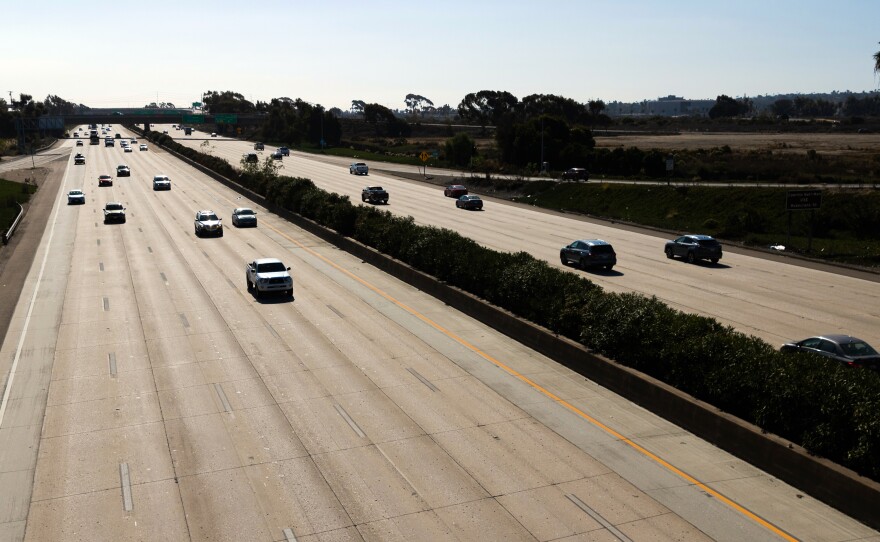An hours-long standoff between police and a domestic-violence suspect on Interstate 5 north of Camp Pendleton ended early Wednesday morning when the suspect shot himself in the head, police said.
The suspect, who had led police on a pursuit from the City Heights area to northbound I-5 near Basilone Road, refused to exit his SUV before he shot himself around 6:15 a.m., San Diego police Officer Tony Martinez said. The man was taken to a hospital, but his condition was not immediately known.
Authorities shut down both directions of I-5 near Cristianitos Road around 5:50 a.m. because of the standoff. All lanes in both directions were reopened by 8 a.m.
The incident began around 8:30 p.m. Tuesday, when officers were flagged down on Central Avenue between Dwight and Landis streets by a naked woman who claimed her boyfriend had physically assaulted and tried to strangle her at a nearby residence, Martinez said.
The woman, believed to be in her 20s, was taken to a hospital for treatment of unspecified injuries, Martinez said.
Officers went to the residence where the assault happened, but discovered the boyfriend had left, he said.
At about 10:20 p.m. Tuesday, patrol officers spotted a vehicle matching the suspect's description driving on northbound Interstate 15 near Interstate 8, Martinez said. Officers attempted to pull the vehicle over, but the driver of the white BMW SUV kept driving northbound.
The SUV driver led police on a chase on multiple freeways throughout San Diego County, Martinez said. Officers used multiple spike strips before the driver eventually stopped on northbound I-5 just north of San Onofre State Beach.
The driver's name and age were not immediately available.






